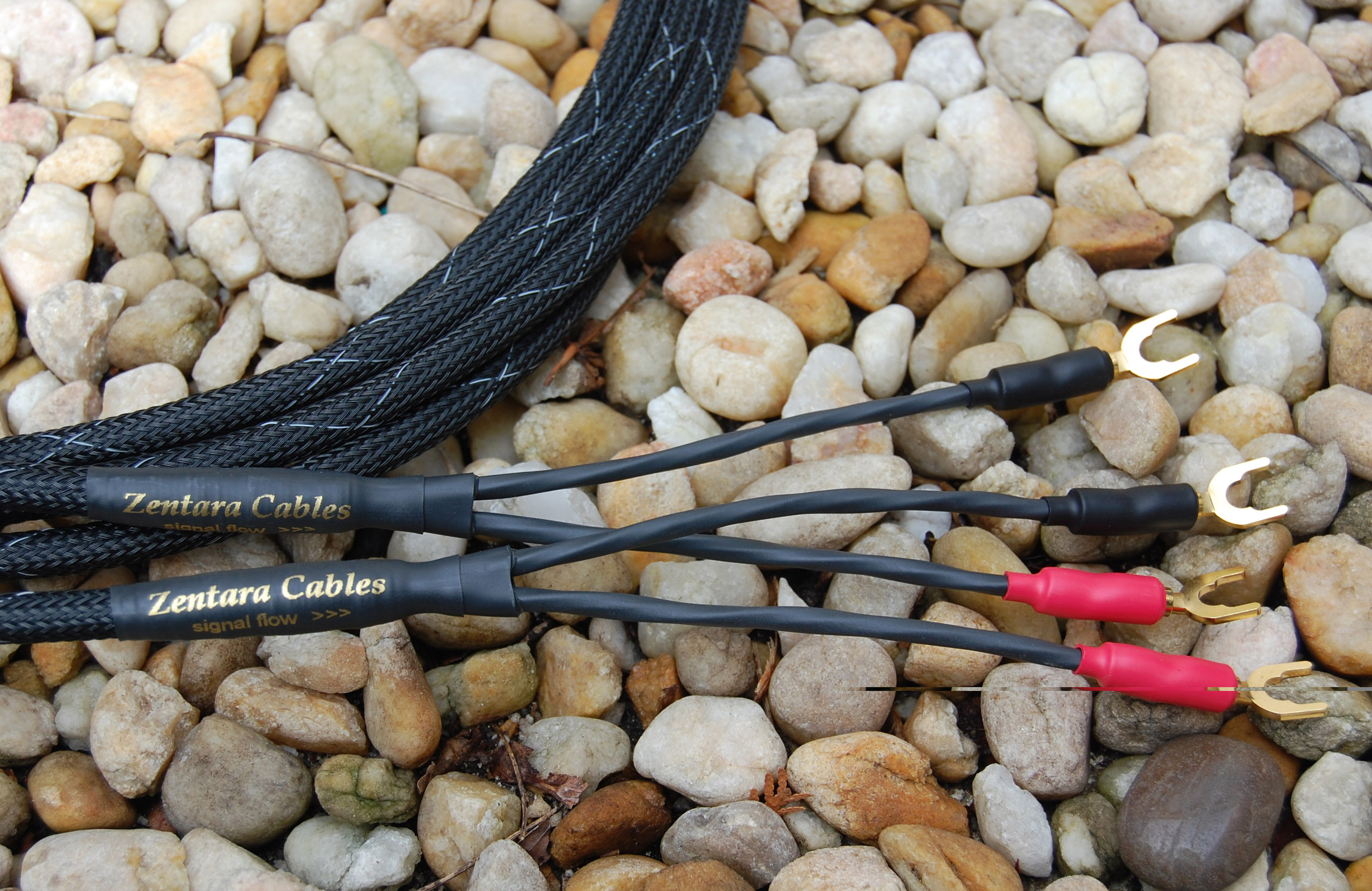Technical Notes
 Can cable make a difference in a system?
Can cable make a difference in a system?
Yes, a high fidelity cable will reveal the details and nuances of the recording and sound reproduction. A poor cable will alter or distort the signal from component to component, thereby compromising the full potential of the audio system.
The effect from a cable on a system may be very small to a large degree, but it's not always an easy thing to differentiate between cables for an inexperienced listener. It is much easier to differentiate the differences between two speakers as compared to two cables.
Through experience, a trained ear, and careful A-B listening sessions, you will notice the differences a cable will make (for better or worse) on a system. Furthermore, the audio system (CDP, preamp, amp, speakers) has to be revealing enough for a listener to hear the difference.
If you truly cannot hear the difference when changing cables in your system, then maybe your system is not
revealing enough for you to notice the difference, and you should use the cable that you prefer based on value
and performance.
A well designed high fidelity cable will provide improvement in the high, midrange, and low frequencies,
transparency, smoothness, sound-stage, and musicality. Be aware of certain cables that boost a certain
frequency range (mids, upper bass or highs), which at first may be striking but over time will be irritating,
fatiguing, or flawed and not very enjoyable over the long term.
What is the best insulation material for high fidelity cables?
Most low end (mass consumer) speaker cables are made with Polyvinyl Chloride (PVC) insulation. These are
cables that you typically buy at Best Buy, Walmart, and Radio Shack.
Polyvinyl Chloride (PVC) has a high dielectric constant and actually attacks the copper over time (copper
poisoning). This type of insulation should be avoided for a high fidelity audio system.
Polyethylene (PE) is a step up from PVC. PE has better dielectric properties. Using the same cable design, a
PE insulated cable will sound better than PVC. Many hi-end cables are made from PE or Foamed PE insulation
and they can be priced from a few hundred to thousands of dollars.
Polypropylene (PP) is slightly better than PE in dielectric property and sounds better than PE. However, PP is a
very stiff material, so the cable made from PP insulation has very low flexibility. Only a very few companies
make PP cables for audio applications. These are also very high priced.
Teflon (FEP, PTFE, PFA) is the best insulation in terms of dielectric properties and resulting in the best sound
for audio cables. Cables made with Teflon are expensive, but they are worth the price of admission.
Be careful with some cables that are Teflon insulated, but the conductor is silver plated copper. This type of
cable sounds very edgy due to the different velocity (phase) of the copper and silver material.
Zentara Cables use a proprietary ultra-thin Teflon insulation for our interconnects and speaker cables to
achieve a very musical and natural sound.
About the designer:
Mr. Neng Kue graduated from Michigan State University with a Graduate degree in Materials
Science & Engineering. Mr. Kue has over 25 years experience in the materials, wire & cables, wiring systems, electronics, and testing.
Mr. Kue's passion in life is music and audio. He enjoys playing music (guitar and bass) and
listening to live music. During the last 20 years, Mr. Kue has had one pursuit in mind: "design and
build world class audio cables that are high value and affordable."